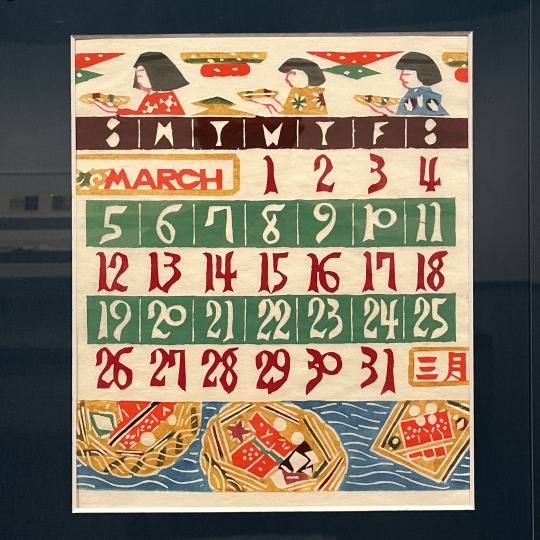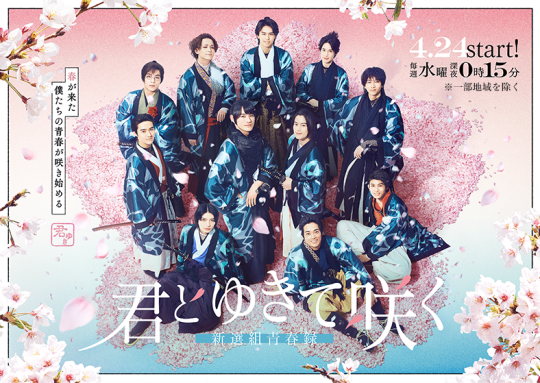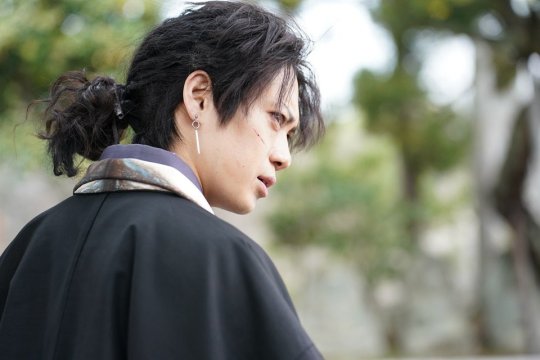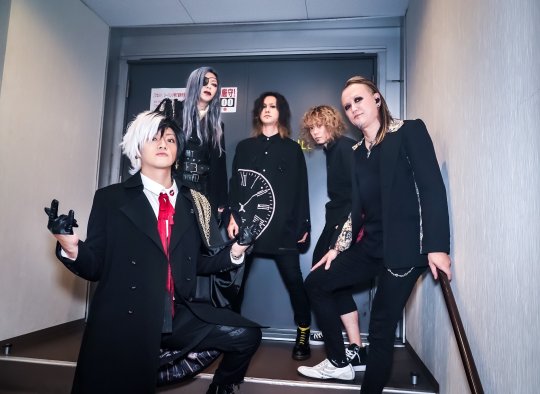#Keisuke Serizawa
Text

Keisuke Serizawa
Fabric
327 notes
·
View notes
Text



Dyeing calendar by dyeing artist Keisuke Serizawa.
染色家、芹沢銈介による染型カレンダー
23 notes
·
View notes
Photo

Keisuke Serizawa - Kataezome Dyed Kimono
stencil-dyed banana fibre cloth decorated
with a repeating motif Okinawan hats and fans
30 notes
·
View notes
Text

#I’m not sure abt Zaki that’s why he is transparent#hakuoki meme#hakuouki#okita souji#kazama chikage#hijikata toshizou#yukimura chizuru#saitou hajime#harada sanosuke#nagakura shinpachi#sannan keisuke#todo heisuke#kondou isami#miki saburou#serizawa kamo#shiranui kyo#I hate writing a lot of tags#yamazaki susumu
192 notes
·
View notes
Text
Since I am writing a story in which Kaoru and Chizuru are part of the Shieikan together I present you with this fine meme:
Who can tell the twins apart?

(no I am not hyping my own fic, what do you mean?)
#hakuouki#hakuoki#nagumo kaoru#yukimura chizuru#okita souji#sannan keisuke#saito hajime#serizawa kamo#hijikata toshizo#yamazaki susumu#harada sanosuke#nagakura shinpachi#todo heisuke#kondo isami#the oni are not on this because they can feel aura and that gives them a cheat card#serizawa always knows who is talking to but only value it when he can benefit from it#the twins#au the twins stayed together
58 notes
·
View notes
Text

Rikyu: You got like, 2 from before and 3 now. Impressive track record honestly.
#fate grand order#fgo na#yamanami keisuke#He betray Guda then Serizawa from previous event#Now Guda Ishida then Rikyu
9 notes
·
View notes
Text
Phantom of the past.
I like serizawa and yamanami as a combination a lot actually. The thought that yamanamisan took part in serizawa's assassination to build the shinsengumi with kondo, but in the end he died because of the shinsengumi he helped build... The irony is *chef's kiss*
Now. About me personally. Half the reason i logged back into my tumblr is to post historical rpf stuff. But your boy learned about 創作新選組 and started a new twt account for historical rpf specifically creative shinsengumi? So rn I'm juggling 4 main accounts in 3 different languages that I don't have time for any other sites i plan to use jjfjjfjdNCJSJFJ

#yamanami keisuke#serizawa kamo#shinsengumi#historical rpf#kinda#still thinking about these two#serizawasan is supposed to look bigger my artstyle just doesn't allow me to manifest it
2 notes
·
View notes
Text

Serizawa Keisuke
Panel with Hiragana Syllabary Poem (Iroha uta)
Shōwa period (1926–89) ca. 1960s
Stencil-dyed (katazome) raw silk
255 notes
·
View notes
Text



[NEWS] Sato Ryuji has been Cast in the TV Drama "With You I Bloom: The Shinsengumi Youth Chronicle"
DESCRIPTION
"With You I Bloom: The Shinsengumi Youth Chronicle" (Japanese title: Kimi to Yukite Saku ~ Shinsengumi Seishun Roku~) is a live action adaptation of the manga called "Shinsengumi" by Tezuka Osamu.
It tells the story of Fukakusa Kyujuro a young man who wants revenge for the death of his father, and joins the Shinsengumi in search for this justice.
SATO RYUJI'S CHARACTER

Sato Ryuji plays a mysterious man who comes to Kyujuro's aid when he meets the enemy who killed his father.
TRIVIA
[1] This isn't the first time Ryuji has had a connection to Tezuka Osamu's works. The Brow Beat (his band where he is the main vocalist) has released "Tsumugu", which is the "BLACK JACK" manga 50th anniversary theme song.

To purchase the physical single of "LOVE LETTER" which includes the song, please refer to this link: HERE
To stream/download the song, please refer to the links below.
Apple Music: HERE
Spotify: HERE
The band is also collaborating with the "BLACK JACK" manga and goods from this collaboration are currently available online. To purchase the goods, please refer to this link: HERE
[2] Miura Ryosuke, who has co-starred with Ryuji in "Jujutsu Kaisen The Stage" and "'Galaxy Express 999' THE MUSICAL" plays Serizawa Kamo.
They both played Gojo Satoru and Itadori Yuji respectively in Jujusute, and Captain Harlock and Prider/Count Mecha respectively in the 999 musical.
The Blu-ray/DVD for "Jujutsu Kaisen The Stage -Kyoto Sister-School Goodwill Event & The Origin of Obedience-" is currently available for pre-order. For more information on how to pre-order it, please refer to this link: HERE
[3] Also included in the cast are Ryuji's co-stars from the "Musical Touken Ranbu", Takano Akira and Sakamoto Shogo, as Shinsengumi members. Akira (Hizamaru in Toumyu) plays Kondo Isami while Shogo (Horikawa Kunihiro in Toumyu) plays Hijikata Toshizo.
In Toumyu, Ryuji plays Kashuu Kiyomitsu, who is a sword owned by Okita Souji of the Shinsengumi. In KimiYuki, his identity is speculated to be Sakamoto Ryoma.
[4] Ryuji and Nagata Takato, who plays Yamanami Keisuke, have also co-starred in the TV drama "Sheasuru Ra! Instanto Ramen Arenji-bu wo Hajimemashita".
[5] Additionally, Kan Hideyoshi and Mokudai Kazuto play original characters who are part of the Shinsengumi. Along with Ryuji, they were part of "Kamen Rider Geats", playing Ukiyo Ace (Kamen Rider Geats), Michinaga Azuma (Kamen Rider Buffa) and Jitto/Zitt (Kamen Rider Regad) respectively.
On a related tokusatsu note, Ryuji also made his entertainment industry debut in "Kamen Rider Fourze" as Satake Teruhiko (Hound Zodiarts) and Miura Ryosuke plays Ankh in "Kamen Rider 000".
[6] Kan Hideyoshi and Ryuji have also co-starred in the movie "HiGH&LOW THE WORST X" where Ryuji plays Nishikawa Yasushi and Hideyoshi plays a member of Barasho.
[7] Kawai Hayato, the director of KimiYuki, also directed the TV drama "Kizoku Tanjou -PRINCE OF LEGEND-", which Ryuji was in.
LINK TO WATCH SATO RYUJI'S EPISODE
To watch Sato Ryuji's appearance on "With You I Bloom: The Shinsengumi Youth Chronicle", please refer to this link: HERE
NOTE: For more information on how to use the site to watch, please refer to this link: HERE
Source(s): ( x , x , x )
#With You I Bloom: The Shinsengumi Youth Chronicle#Kimi to Yukite Saku ~ Shinsengumi Seishun Roku~#Musical Touken Ranbu#Toumyu#Touken Ranbu#Jujutsu Kaisen The Stage#Jujusute#Jujutsu Kaisen#Kamen Rider Geats#HiGH&LOW#The Brow Beat#Sato Ryuji#KimiYuki
25 notes
·
View notes
Text

Bamboo Grove (2016)
Hamanishi, Katsunori

Shower (2016)
Hamanishi, Katsunori
17 notes
·
View notes
Text

Serizawa Keisuke Panel with Hiragana Syllabary Poem (Iroha uta) Shōwa period (1926–89) ca. 1960s Stencil-dyed (katazome) raw silk.
28 notes
·
View notes
Text
Round 1!
Rules
Vote for who you think is more queer/gay (doesn't matter if you think they're bi, pan, gay, lesbian, etc. Who's the most not straight!)
I will allow propaganda in the form of asks or notes (tags and comments)
Be nice and respectful. Not everyone has the same headcanons.
Remember, this is mostly just for fun! We have a few submitted characters for this exact purpose, so don't take things too seriously. (It doesn't matter what the results are, most persona characters will be queer-coded in my heart)
The list of polls is as follows:
Labrys vs. Daisuke Todoroki
Principal Kobayakawa vs. Yukiko Amagi
Mayumi Yamano vs. Suguru Kamoshida
Bebe vs. Sho Minazuki
Isako Toriumi (Maya) vs. Ann Takamaki
Ichiryusai Madarame vs. Ichiko Ohya
Chihiro Fushimi vs. Ai Ebihara
Philemon vs.Shibusawa
Kou Ichijo vs. Fuuka Yamagishi
Munehisa Iwai vs. Miyabi Hanakouji
President Tanaka vs. Akihiko Sanada
Ryuji Sakamoto vs. Taro Namatame
Kanami Mashita vs. Haru Okumura
Nozomi Suemitsu vs. Angel and Julian
Ryotaro Dojima vs. Rio Iwasaki
Sadayo Kawakami vs. Maya Amano
Nagi vs. Saori Hasegawa
Cashier from Peace Diner vs. Junpei Iori
Chizuru Ishigami vs. Minoru Inoue
Chihaya Mifune vs. Mamoru Hayase
Misuzu Hiiragi vs. Lala Escargot
Setsuko Sonomura vs. Junko Kurosu
Eri Minami vs. Tae Takemi
Zen vs. Kenji Tomochika
Eriko Kirishima vs. Takeharu Kirijo
Mika vs. Metis
Junya Kaneshiro vs. Takuto Maruki
Moel Gas Station Attendant vs. Hanako Ohtani
Maya Okamura vs. Igor
Sayoko Uehara vs. Makoto Yuki
Lesbian Student from P3 vs. Mami Shibata
Shunsuke Fujii vs. Saki Konishi
Tatsuya Suou vs. Akinari Kashihara
Miho Ogishima vs. Kinshiro Morooka
Hisano Kuroda vs. Ayane Matsunaga
Kanji Tatsumi vs. Makoto Nijiima
Marie vs. Tatsuya Sudou
SIU Director vs. Reiji Kido
Baofu vs. Takahisa Kandori
Yuuki Mishima vs. Tamaki Uchida
Zenkichi Hasegawa vs. Yosuke Hanamura
Mitsuo Kubo vs. Aigis
Kei Nanjo vs. Margaret
Masao Inaba vs. Noriko Katayama
Yukino Mayuzumi vs. Saeko Takami
Tadashi Satomi vs. Chidori Yoshino
Yumi Ozawa vs. Gay Demons P2
Kasumi Yoshizawa vs. Yuka Ayase
Hidetoshi Odagiri vs. Mutatsu
Shinjiro Aragaki vs. Kazushi Miyamoto
Localized version of Naoya vs. Ren Amamiya
Coach Hiraguchi vs. Chie Satonaka
Shuji Ikutsuki vs. Shiho Suzui
Futaba Sakura vs. Naoto Shirogane
Jin Shirato vs. Hifumi Togo
Keisuke Hiraga vs. Eikichi Mishina
Maki Sonomura vs. Toranosuke Yoshida
Rise Kujikawa vs. Elizabeth
Goro Akechi vs. Yuko Nishiwaki
Noriko Kashiwagi vs. Ulala Serizawa
Yuko Himeno vs. Anna Yoshizaka
Hikari vs. Joker (IS)
Mitsuru Kirijo vs. Hidehiko Uesugi
Masayoshi Shido vs. Youichi Makimura
17 notes
·
View notes
Photo

Ainu kaparamip robe
Hokkaido, Japan, 19th–20th centuries
White cotton ground with colored appliqué patterns
Shizuoka City Serizawa Keisuke Art Museum
In the 16th century trade with the West introduced European cotton and wool to the Japanese, and though Japan closed its borders to the outside world at the dawn of the 17th century, maintained limited trade with Chinese and Dutch merchants allowed continued procurement of the materials, as well as other goods.
Throughout the Edo period (1603–1868) Hokkaido existed as a sort of borderland within the state of Japan. Officially under Japanese rule, it was administered by a hereditary governorship left largely to its own devices in local matters, and the rugged northern island was wild and untamed, and undeniably a frontier land within the political sphere. The indigenous peoples of the island, the Ainu, bartered and traded with the nominal Japanese government, and with Japanese traders from the south, procuring metalwork cooking implements and weapons as needed, but mostly continued to live as they had for centuries, if not millennia.
The Ainu used all the resources their home gave them, and made clothes from animal skins and from tree bark and plant fibers. Popular plants for creating fabric included elm bark, known as attush, and the fibers from staff trees and nettles, called retarpe, which means “white things”, due to the color of the fabric they created. Skin-coats were made from everything from the seals and bears they hunted to birds, dogs, and even fish—a fish-skin coat in fact was lightweight, strong and durable, and waterproof. The clothing they created is notable for the striking geometric and abstract patterns prominently and extensively used in their designs, which were created either through embroidery or with applied fabrics.
Western cotton and wool were first introduced to the Ainu in the early Edo period, in small quantities. Cotton became popular, but was hard to come by. Ainu women would barter for old Japanese clothing or bedsheets made of the material, and stockpile what they could, then cut the fabric into strips and apply them to garments made of more traditional materials, a technique they called ruunpe.
In the late Edo period, starting around the end of the 18th century, large quantities of cotton became available to the Ainu through trade with Japanese traders from Honshu, and they began making garments with the material in addition to the more traditional fabrics derived from animal skins and tree bark. These cotton garments became generally known as chikarkarpe, which means “things we embroider”, while lightweight cotton clothing in particular became known as kaparamip, meaning “thin clothes”.
In 1855 the central Tokugawa government took over direct control of the island to defend against possible Russian incursions, and after Japan opened itself up to the world and entered the Meiji period (1868–1912), the wave of modernization that followed touched on Hokkaido as well. As trade and industrialization made mass-production of cheaper, Western cloth available, and under increasing geopolitical pressure from Japan’s central government, including forced assimilation, the Ainu people were slowly absorbed into the nation’s populace, and most traditional forms of clothing disappeared. Today the Ainu are a minority ethnic group in Japan.
55 notes
·
View notes


